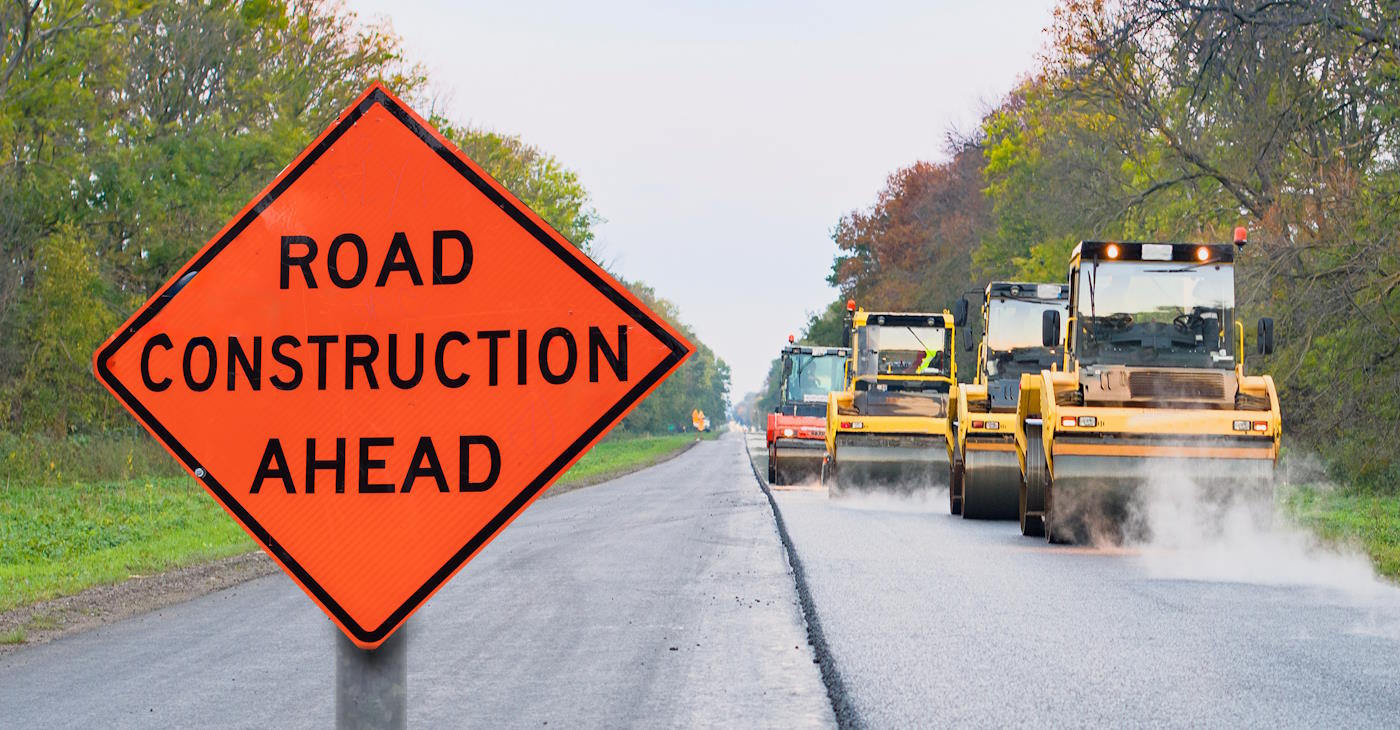Are you curious about the total thickness of a typical roadway, from the topmost asphalt layer down to the foundational layers? Well, the exact measurement varies based on factors such as traffic load, climate, and local regulations. Generally, a high-capacity road could measure anywhere from 30 to 50 centimeters in total thickness. This may include an asphalt surface of about 5 to 10 centimeters, one or two binder courses (often 6 to 8 centimeters each), and a base layer of crushed stone reaching 10 to 20 centimeters. Below that lies compacted soil or a subbase, which can add extra depth depending on the underlying ground conditions. Local roads, designed for lighter use, may be thinner—sometimes as little as 20 centimeters total—while major highways, built to bear heavier loads and endure greater wear, might exceed 50 centimeters when all layers are combined. Let’s have a broader look at road construction in the below article.
What do we mean by road construction?
Road construction refers to the engineering, planning, and physical processes required to build a roadway capable of supporting vehicles and pedestrians in a safe and efficient manner. The process involves not only the physical act of paving but also surveying, soil stabilization, drainage design, environmental considerations, and ongoing maintenance. A road must handle continuous mechanical stress from cars, trucks, and sometimes extreme weather conditions. Construction engineers therefore consider aspects such as subgrade stability, surface durability, drainage pathways, and the local environment in order to ensure that the road remains usable throughout its intended lifespan. Road construction can also encompass pathways, highways, rural roads, and even specialized infrastructure such as airport runways, though the latter often follows additional technical standards.
The methods of constructing a road
Contemporary road construction methods generally fall into two broad categories: traditional “macadam-type” layering and modern mechanized surfacing with asphalt or concrete. The traditional method, once developed by pioneers like John Loudon McAdam, involved placing multiple layers of crushed stone, each carefully compacted and sealed with binders like tar. Over time, this approach gave rise to more precise methods that incorporate stronger base courses and engineered asphalt mixes. Modern methods typically include site surveying, subgrade preparation (removing soft soil and ensuring stable support), installation of a granular or stone base, application of a binder course (often a bituminous mixture), and laying the final wearing course (asphalt or concrete).
In many large-scale projects, polymer-modified asphalts or reinforced concrete may be used for enhanced performance. Environmental considerations, such as reducing stormwater runoff, can introduce additional design elements like porous asphalt or integrated drainage channels. The actual construction process usually begins with removing vegetation or unwanted materials, leveling or reshaping the ground, and then precisely layering and compacting the materials before the final surface is placed.
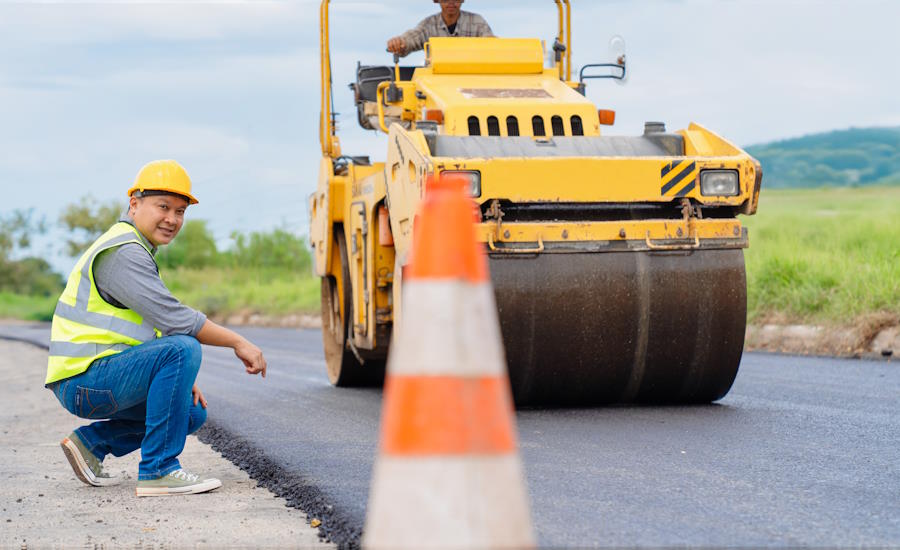
You can’t do the task without these machines!
Modern road construction employs a range of specialized machinery. Excavators and bulldozers clear and prepare the site, removing debris and shaping the landscape, such as land clearing and excavation. Motor graders then refine the surface, ensuring accurate slopes and gradients. Vibratory rollers and plate compactors consolidate each layer—subgrade, subbase, and base materials—to achieve the density necessary for a stable road foundation.
Pavers are essential for laying the asphalt wearing course with uniform thickness and an even surface texture. Asphalt mixing plants, located off-site or nearby, produce the hot asphalt mix that the paver distributes. For concrete roads, slipform pavers can lay and shape concrete continuously, often incorporating steel rebar for added tensile strength. Finally, road finishers and specialized rollers provide the finishing touches, smoothing and consolidating the asphalt or concrete to the required level of compaction and ride quality.
Remember, land clearing is not something you take lightly, especially if it includes forest harvesting, which in case means careful deforestation at first! Looking for equipment for said task? Visit FTGMowi.com and experience their offering regarding timber trailers and cranes.
The four main layers of a road – asphalt on top
While the nomenclature varies slightly by region, many roads are built using four fundamental layers:
Subgrade (foundation)
This is the native soil or improved soil, sometimes stabilized with lime or cement if it is too soft or susceptible to moisture.
Subbase (if needed) or base course
A compacted layer of stone aggregate or granular material that sits on top of the prepared subgrade.
Binder course
A load-bearing intermediate layer of asphalt (or in some cases, a crushed aggregate bound by bitumen) that ties the base and surface layer together.
Surface or wearing course
The topmost layer exposed to traffic. In asphalt roads, this is typically a well-graded bituminous mix that can withstand climate-induced wear and tear.
In most parts of the world, asphalt remains the predominant choice for the top layer, largely because of its relative flexibility, ease of repair, and cost-effectiveness. Concrete is also widely used—particularly in high-traffic areas or places subject to extreme temperatures—though it is often more expensive to install initially.
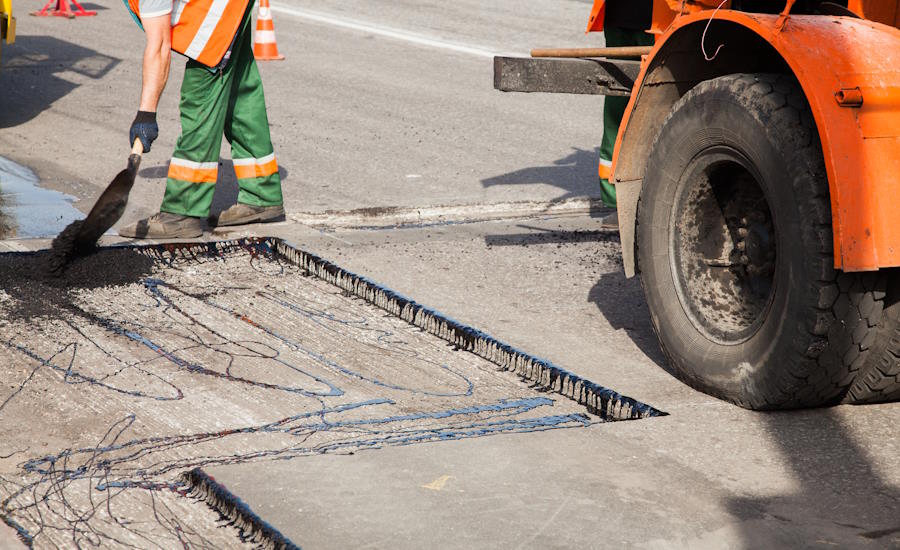
Materials in use
Common road-building materials include crushed rock, gravel, sand, asphalt, and, in certain cases, concrete. Asphalt itself is a mixture of bitumen (a sticky, semi-solid petroleum byproduct) and aggregate (stone chips, sand, or gravel). Bitumen serves as the binder, holding the aggregate together and providing the road with a smooth riding surface and water-resistant properties. Concrete roads incorporate cement as a binder, combined with aggregates such as gravel and sand. More advanced systems sometimes feature recycled materials like crushed old pavement or ground tire rubber, and polymer additives can increase durability. The choice of materials is influenced by cost, local climate, expected traffic loads, and environmental regulations.
Side question: How do potholes occur?
Potholes, often the bane of every driver, typically form when water seeps through small cracks in the surface layer and accumulates underneath. As vehicles repeatedly pass over these weakened spots, or as freezing and thawing cycles expand and contract the trapped water, the pavement loses structural integrity. Eventually, a piece of the surface collapses into the void beneath, leaving a crater-like hole. Poor drainage, under-compacted subgrades, or the repeated impact of heavier vehicles all accelerate pothole formation. Effective drainage systems, regular maintenance, and high-quality materials in the binder and wearing courses can help reduce the frequency and severity of potholes.
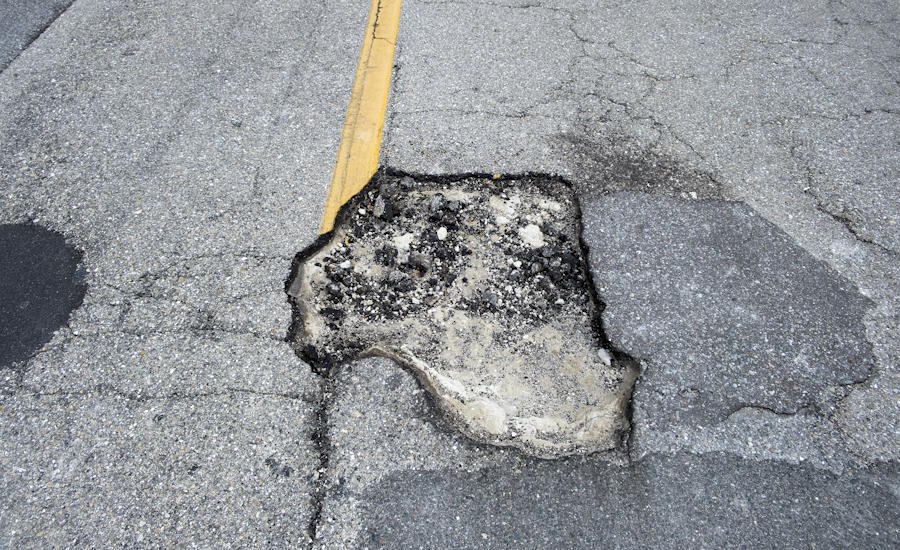
Roads around the world! Hint, it’s a lot!!
Tracking the total global road network is a challenging endeavor, as precise measurements can vary by source and year. However, estimates suggest there are well over 64 million kilometers of roadway worldwide. This figure continues to grow as new roads are constructed in emerging regions and as existing networks expand or undergo significant upgrades. Data from international transport organizations and local government agencies often form the basis of these estimates, though rapid infrastructure growth in some parts of the world can make accurate tallies difficult.
The country with the most roads
The United States consistently ranks at the top in terms of total road length, boasting a network that exceeds 6.5 million kilometers. The vast interstate highways and extensive urban and rural roads reflect the country’s historical growth and dependence on automobiles for personal and commercial transport. India, China, and Brazil also have very large networks, though each country’s measurement may differ depending on what counts as an official “road” or “street,” especially in rural or remote areas. Regardless of exact figures, these large nations continually invest in road infrastructure to accommodate high population densities, economic activities, and rapid industrial growth.
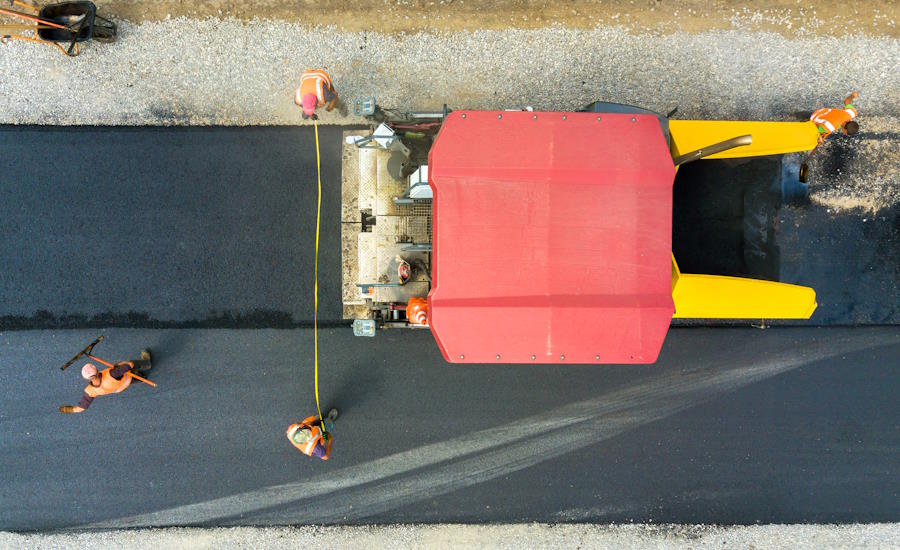
Trivia: When did we start building roads?
Road-building has a surprisingly ancient history that underscores humanity’s long-standing need for reliable travel routes. Some of the oldest known paved roads date back to around 2600 BCE in regions such as ancient Egypt and Mesopotamia, where they facilitated trade, military campaigns, and communication. However, the Romans are often credited with extensive road networks that formed the backbone of the Roman Empire from roughly 300 BCE onward. These roads featured multiple layers of stones, drainage systems, and precise engineering to ensure longevity, many of which can still be traced today. Over centuries, various cultures refined road-building techniques, adopting new materials and methods. The Industrial Revolution catapulted road construction to a larger scale by introducing modern machinery and standardized processes. Today, with more advanced equipment and research-based practices, road construction remains a continuously evolving field aimed at supporting our ever-increasing transportation demands.
Let’s break it down – this is road construction
From its core layers to its surface materials and from ancient routes to modern highway engineering, road construction is a complex endeavor requiring scientific insight, engineering expertise, and continuous innovation. While asphalt dominates contemporary projects for its relative ease of use and adaptability, other techniques—such as concrete paving, polymer-modified surfaces, and recycled material integration—are equally important in certain contexts. Regardless of which method or material is chosen, the overarching goal remains the same: to provide safe, durable, and sustainable pathways that connect cities, support economies, and enable daily travel around the world. By understanding how roads are built, why certain materials are selected, and what causes issues like potholes, we gain an appreciation for an infrastructure system that supports much of modern life—and one that has roots stretching back thousands of years.

